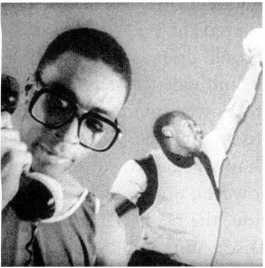
The administration of President Ronald Reagan (1980-1988), largely a representation of New Right agendas, relaxed controls on business and trimmed 1960s social programs. As a figurehead, Reagan symbolized an America once more in possession of patriotic values and know-how. Although this image was tarnished by mounting federal deficits and the Iran-Contra scandal, he could claim credit for occupying the White House when the Soviet Union began to break with cold war policy. An ex-movie star who used lines from Warner Bros. films in his speeches, whose high-technology Strategic Defense Initiative was nicknamed “Star Wars,” and who was wounded in an assassination attempt by a young man obsessed with Taxi Driver, Reagan typified the extent to which Hollywood film pervaded the very consciousness of the country.
A recession at the start of the 1990s encouraged voters to elect Bill Clinton over single-term President George Bush. Clinton eagerly made friends among the liberal elite of Hollywood. Clinton was an enthusiastic movie fan who enjoyed living as a celebrity, and for many observers he typified the self-absorption of baby boomers who had once criticized the “system” but were now enjoying its fruits without guilt.
During these administrations, more conglomerates acquired Hollywood firms, tying films to music and publishing subsidiaries. The Justice Department also permitted the Majors to acquire movie theaters and television stations, effectively canceling the Paramount decision of 1948 (pp. 327-328). Vertical integration was back. Meanwhile, the studios continued the blockbuster strategy, seeking to draw diversified audiences to must-see movies. At the center of mass culture, Hollywood was becoming “content” for media empires and digital delivery. At the same time, independent filmmaking saw a burst of creativity, but by the end of the 1990s, it too was being absorbed by the Majors.




 World History
World History









